Results 5,441 to 5,450 of 12096
Thread: Anandtech News
-
10-20-15, 11:36 AM #5441
Anandtech: Hands On With the HTC One A9
Today, HTC is launching their flagship smartphone for the holiday season. For those that have followed HTC, this launch shouldn’t be too much of a surprise given that the CEO announced that they would be launching a hero product in October. This hero product is the HTC One A9, which brings a new design and a new product lineup for HTC. According to HTC, the new A series is intended to be a design-focused smartphone as opposed to the technological leader that is the M series. Of course, while design matters quite a bit probably the first thing that matters in a smartphone are the internal parts so the usual spec sheet is below.
In some ways, HTC is really an outlier with the release of this phone. For the most part this year I’ve seen OEM after OEM releasing phones that are either uncomfortable or basically impossible to use with one hand with the rare exception of the Galaxy S6. In fact, the One A9 is almost identical to the Galaxy S6 in height and width, but is roughly half a millimeter thicker. However, the One A9 is noticeably thinner in the hand by virtue of a more rounded transition to the back of the phone.HTC One A9 SoC Qualcomm MSM8952 Snapdragon 617
4 x Cortex A53 @ 1,5GHz
4 x Cortex A53 @ 1.2GHzGPU Adreno 405 RAM 2/3GB LPDDR3 NAND 16/32GB + microSDXC Display 5.0" 1920x1080 AMOLED Dimensions 145.75 x 70.8. x 7.26 mm, 143g Camera 13MP Rear Facing with F/2.0 aperture + OIS
4MP UltraPixel Front Facing with F/2.0 apertureBattery 2150mAh (8.17Wh) OS Android 6.0 Marshmallow with HTC Sense Cellular Connectivity 2G / 3G / 4G LTE (Qualcomm X8 Category 7 LTE) Other Connectivity 2.4/5GHz 802.11a/b/g/n/ac + BT 4.1, GNSS, microUSB 2.0 SIM NanoSIM Price $399
Since we’re talking about the form of the phone, it’s probably obvious by now that this phone bears at least a passing resemblance to an iPhone 6 or 6s. HTC claims that this design isn’t designed to ape the iPhone, and in some ways they are correct as the antenna design is noticeably different when directly compared to the iPhone 6 and 6s. The sides of the phone are also curved differently and reminiscent of the Desire 800 series as the sides of the phone have a much less aggressive radius of curvature than what is seen in recent iPhones. These sides are also relatively glossy instead of the coarser sand-blasted finish seen on the iPhone.
In some ways, the comparisons seem unavoidable. From the front of the phone, the design doesn’t really look like a Desire smartphone due to the all glass design. The earpiece is also a departure from recent HTC designs, although HTC has used such a design before with the EVO LTE. The fingerprint scanner was seen as recent as the One M9+, but at the time it was partially shared with the speaker grille instead of part of the glass. The glass is also a 2.5D curved piece so edge swipes are smooth, which is something we saw with the One X but hasn’t made a return until now.
These are all design elements that we’ve seen in HTC phones before, but the sum results in a phone that looks a bit too close to the iPhone 6 for comfort. In practice, it does feel like a very different phone than the iPhone 6, but when only looking at photos it’s probably hard to tell that this is the case. If I were to look at previous HTC smartphones, I do see a strong resemblance to the One S, but the design of the One S is still quite different from what we see in the One A9. Regardless of whether this is an iPhone-inspired design or not, the design is a breath of fresh air after multiple launches of 5.5” size phones with ever-increasing size.
Putting design aside, there are some other major departures in this phone for HTC. The first is that this is a return to an AMOLED display, in the form of a 1080p AMOLED display. I wasn’t able to determine whether this is equivalent to the Galaxy S5 or S6 generation of AMOLED but the display gives a noticeably blue reflection when the screen is off when compared to the Galaxy S6 and S5, which could be indicative of what generation AMOLED technology we’re dealing with. Interestingly enough, HTC has included a display setting to toggle between “AMOLED” and sRGB mode, which could bode well for those that care about color accuracy in displays.
The SoC is also not exactly the definition of high-end, as HTC has elected to use a Snapdragon 617 which is likely due to issues with the Snapdragon 810 and 808. As far as I can tell Snapdragon 618 or 620 weren’t possible at this time so it seems that HTC is in some ways stuck between a rock and a hard place when it comes to SoC choice. In some ways, I don’t really see another choice here, especially given the price point that HTC is competing in. The SoC choice also means support for Qualcomm’s QC 3.0 quick charge standard.
The camera is arguably one of the major notable points for HTC here, as it’s a 13MP IMX214 sensor with F/2.0 optics and second generation OIS. This sounds kind of boring at first glance but taking some quick relative comparison shots indoors with the iPhone 6 and Galaxy S6 for comparison was shocking to see when the One A9 was comparable, if not even better than the Galaxy S6 in the dimly lit room in which I tried the One A9. There’s also a feature that allows for automatic processing of RAW photos on the phone, which is impressive but processing a single photo took a significant amount of time relative to the near-instant output of normal photos. I would estimate that a single photo took as long as 10-20 seconds to process, which suggests that a better SoC would go a long way towards improving the UX here.
The fingerprint sensor is also surprisingly fast and accurate in my experience, and noticeably improved over the One M9+. HTC emphasized that this was necessary for a good Android Pay experience, which means that this phone also has NFC which appears to work off of the top metal antenna but lacks the boosting system seen in the iPhone 6 so NFC behavior is going to be similar to other HTC phones.
The software experience is also notably changed when compared to the One M9. Although many parts of the phone are still going to look like the same HTC Sense that we’ve seen since the start of this year, other parts like the notification drawer, camera app UI, multitasking menu, and the removal of a number of HTC Sense apps like the HTC Music and Internet apps and the HTC Calendar widget. I personally think HTC may have taken out too many HTC apps and widgets here, but the updates to make HTC Sense fit better with Material Design is definitely a good thing.
On the audio side, HTC is claiming that Dolby Audio enhancement and 24-bit 192 KHz will dramatically improve audio quality. I didn’t get a chance to test these claims, but the headphone jack does use an RT5506 amplifier from the One M8 which had great audio quality from our testing. The speaker also has a TFA9895 amp on it which should help with quality but due to the downward-firing nature of this speaker the quality is likely to be worse than what we saw on the One M8.
Overall, while this isn’t the holiday season flagship that some might be expecting, I came away quite impressed with this phone. Despite the mid-range SoC I was more impressed with this phone than the One M9 at launch. Obviously, the true successor to the One M9 is the phone that everyone is really waiting on, but this phone shows that HTC is capable of responding to clear market demands. Although not every piece of the A9 is what I’d want to see in the M10, aspects like the dramatically improved camera processing, renewed focus on industrial design, and changes to HTC Sense should definitely be carried over.
The HTC One A9 will be offered in Opal Silver, Carbon Gray, and Deep Garnet starting at 399.99 USD unlocked with 3GB of RAM and 32GB of storage. One variant will support Sprint, while the other will support T-Mobile, AT&T, and Verizon with a pre-activated SIM. HTC will also offer their Uh-Oh protection for phones sold through HTC.com, which means 12 months of coverage for accidental damage from drops or water damage with one free replacement, along with a 6 month subscription to Google Play Music.
More...
-
10-20-15, 01:30 PM #5442
Anandtech: The ASUS Z170-A Motherboard Review: The $165 Focal Point
In the world of technology, you could speculate if there is ever a golden age, or a renaissance. All the time we expect technology to grow and improve, being better than the last. Sometimes there is nostalgia, but it never stops us using the latest because it provides the user experience we expect at a minimum. Like all the motherboard manufacturers, I've followed ASUS for years, and observed their constant iteration as platforms evolve. The newest Skylake platform is upon us, and we review the ASUS Z170-A motherboard to see their interpretation of the desktop this generation.
More...
-
10-21-15, 08:05 AM #5443
Anandtech: AMD Launches Excavator Based R-Series APUs for Embedded with DDR4 Support
Despite the recent news surrounding AMDs reorganization and financials, today AMD is announcing the launch of its first DDR4 processors. But rather than aiming at the high end or the consumer platforms like their blue competitors, AMDs focus for DDR4 starts in the embedded sector which comprises of digital signage, vertical markets (medical), networking, point-of-sale, commercial and industrial applications.
The new R-series line uses the same Excavator cores we have seen in AMDs Carrizo platform but with an extra level of validation and support. An embedded platform regularly requires security, and thus features such as AMDs use of ARM TrustZone along with high performance graphics and HSA 1.0 features are all aimed at these markets. Currently at launch, AMD is submitting the processors for 'HSA 1.0 Full' validation to the HSA Foundation, and expect to be approved within a week or two.
The initial launch will be of five ‘Merlin Falcon’ processors, supporting DDR3 and DDR4 through a dual controller design, with the single module cheaper silicon being limited on memory speeds. Three of these will be APUs with 3rd generation GCN graphics while two are pure CPU silicon. There will be another set of processors coming in Q1 in the R-series as part of the iTemp line, featuring a wider validated temperature operating window from -40ºC to 105ºC. This will essentially the same silicon as the others, but requires additional validation on AMDs side. Customers requiring ISO or MIL validation will have to enquire with AMD direct.
Obviously an interesting element is the DDR4 support. These are the same silicon as the laptop versions of Carrizo, which doesn't have DDR4 support and begs the question of where it went for consumers. We were told by AMD that for this platform, which is expected to have a 7-10+ year life cycle, the requirements for DDR4 were to allow their customers through the memory transition as the market shifts. Reasons as to why the Carrizo silicon in laptops are not DDR4 enabled revolve around the mix of DDR3-only Carrizo-L and Carrizo designs, as well as marketing of those parts.
Aside from this, the new R-series brings the chipset/south bridge normally connected to provide the storage and PCIe supported onto the same silicon die as the APU. This means that the chipset is now made at the same processing node as the APU, reducing power, but it also makes power management easier as well as reducing the size of the motherboard needed for the system. AMD told us in a briefing that a number of customers have requested an overall smaller form factor for their designs, and this is here for that.
At the time of writing, the new R-series will support three displays, using a variety of connectivity. We have been told that this is the currently validated list, and other display configurations are still being tested. On the left is AMD’s ‘Bald Eagle’ platform, with R-series processors derived from Kaveri cores.
Part of today's announcement also lot to do with the Linux ecosystem surrounding the embedded market. AMD is moving its entire graphics driver stack to open source, removing the disconnect with some closed source drivers. Elements of the stack are under different open source licenses, but it allows customers to develop and distribute a custom driver kernel specific to their needs. Customers can also select part of AMDs Linux distribution platform.
Performance for the new Merlin Falcon parts, according to AMD and running benchmarks such as 3D Mark, puts the high frequency RX-421BD APU at 15W on par with the previous generations RX-427BB (Bald Eagle, Kaveri-based) when at 35W. Customers for these parts can work with AMD and Sapphire (AMD’s long term AMD Pro partner) to obtain evaluation ‘AMD Gardenia’ motherboards.
Just to be clear with these embedded parts, in AMD’s briefing to us they identified the markets they are targeting – gaming machines (poker, pachinko, etc), communication infrastructure, industrial control/automation, storage, medical, security/surveillance and retail signage. Any hopes of being able to play with DDR4 on an Excavator based platform, for the end user at least, is still an unknown. That being said, we are working with AMD to perhaps get a couple of evaluation boards to test, at least to see how DDR3 vs. DDR4 performance comes into the equation.
Source: AMD
Gallery: AMD Launches Excavator Based R-Series APUs for Embedded with DDR4 Support





More...
-
10-21-15, 08:05 AM #5444
Anandtech: The Microsoft Surface Pro 4 Review: Raising The Bar
Microsoft moved the yardsticks with the Surface Pro 3, a surprise hit after multiple generations of Surface Pro. With the Surface Pro 4, they look to take what worked in the Surface Pro 3 and refine it, improve it, and pack it with technology. This is our first look at Intel's 6th generation Core processor in the 15 Watt range, and the outgoing Surface Pro 3 was two generations behind so expect nice gains in performance. Lighter, thinner, and a larger display, but in the same dimension chassis, this is the AnandTech review of the Microsoft Surface Pro 4.
More...
-
10-21-15, 08:36 AM #5445
Anandtech: The Microsoft Surface Book First Look
Today is the official launch day for not only Microsoft’s Surface Pro 4, but also the Surface Book which was announced back at the Microsoft Windows 10 Devices event. There had been rumors of a larger form factor Surface Device, but launching it as a “The Ultimate Laptop” was certainly unexpected. Microsoft has tried to break the mold compared to the standard Windows Ultrabook, with a detachable display, which they call a Clipboard, and an optional GPU in the base. By moving the CPU and other components into the display, it has certainly freed up the base for extra battery capacity as well as the GPU, something that would not be thermally possible in a normal Ultrabook.
I was lucky enough to receive a Surface Book at the event, but the pre-production unit that I received had a defective keyboard. Due to very limited supply initially obtaining a replacement unit was difficult, but Microsoft came through with another sample. Due to the time needed to swap I haven’t had time to do a full review yet, but being that this is the launch day it’s important to offer a preliminary showing on the Surface Book. We have some results for both the base Core i5 model as well as the Core i7 version which comes with the NVIDIA GPU in the base.
First, I think the one piece of information that most of our regular readers are curious about is the GPU. At the launch event, Microsoft was pretty guarded about what GPU model was in the Surface Book. Their specifications just listed it as an "NVIDIA 8G" part, which was a custom Maxwell based GPU.Surface Book Core i5 Core i5 w/GPU Core i7 w/GPU GPU Intel HD 520 Intel +
"NVIDIA GeForce" (Approx. GT 940M) w/1GB GDDR5CPU 6th Generation Intel Core i5-6300U (15w) 6th Generation Intel Core i7-6600U (15w) Memory 8-16GB RAM Display 13.5" IPS 3000x2000 resolution
1800:1 Contrast Ratio
100% sRGB, individually calibrated
10 point touch and Pen supportStorage PCIe 3.0 SSD 128 GB to 1 TB I/O USB 3.0 x 2 (In Base)
SD Card reader (In Base)
Surface Connector (In Tablet and Base)
Headset Jack
Mini DisplayPortDimensions Laptop
(mm) : 232 x 312 x 13.0-22.8
(inches) : 9.14 x 12.3 x 0.51-0.90
Tablet Only
(mm) : 220.2 x 312.3 x 7.7
(inches) : 8.67 x 12.3 x 0.30Weight Laptop
1.515 kg / 3.34 lbs
Tablet Only
726 g / 1.6 lbsLaptop
1.579 kg / 3.48 lbs
Tablet Only
726 g / 1.6 lbsCamera Windows Hello (Front)
8 MP Rear Facing
5 MP Front FacingPrice $1499+ $1899+ $2099+
Taking a look at the GPU in our samples leads us to the conclusion that it is most certainly a GM108 based GPU, with specifications fairly close to the GeForce GT 940M. There are 384 CUDA Cores available, but the custom part is the memory. Normally GT 940M would come with 2 GB of DDR3 memory, and Microsoft has instead gone with 1 GB of GDDR5, trading memory capacity for improved GPU performance through additional memory bandwidth. This is a pretty typical tradeoff in lower-end GPUs, however to ship 1GB of GDDR5 in a mobile part in 2015 is quite unusual to say the least. Even GM108 should benefit from GDDR5 (thanks to its narrow 64-bit memory bus), but with only 1GB of memory it's going to be cramped.
Moving on, the GPU connects over PCIe lanes provided by the Surface Connect port between the Clipboard and base.
Microsoft does have Optimus enabled, with the default setting in the custom control panel for Auto-Select on the GPU, but you can also change to integrated or the NVIDIA graphics. There is no GeForce Experience installed, so in order to make the change you have to dive into the Control Panel. It’s not very elegant but I think the idea is that you just leave it in auto and let the whitelist handle when the dGPU is enabled. My experience so far is that the whitelist seems a bit bugged right now, and the dGPU runs all the time when the Clipboard is docked, which is clearly not the way it is intended to be.
With the GPU information out of the way, let’s dig into what makes the Surface Book so unique. The basis of the Surface Book is that it is designed to be used as a laptop most of the time, but the display can be removed as a Clipboard for use with the pen. The Surface Book is certainly not the first device to do this, but it does some things in new ways that are pretty interesting.
The display sticks with a 3:2 aspect ratio, the same aspect ratio as the Surface Pro lineup. This makes the Surface Book considerably taller than pretty much every laptop out there, with maybe the exception of the Chromebook Pixel if you want to count that. For what feels like too long, the standard Windows laptop comes with a 16:9 display, and even prior to that the standard was 16:10 which is slightly taller than 16:9. Moving to 3:2 on a notebook brings a lot of vertical space and makes it a lot easier to be productive on, at least in my experience in my short time with a review unit.
The Clipboard itself is pretty nice too, and with the decision to not include any USB ports on the display section, it gave Microsoft the ability to make the tablet portion even thinner than the Surface Pro 4. At just 7.7 mm thick, it is noticeably thinner than the 8.4 mm Surface Pro 4 even though it doesn’t sound like a big difference. At just 726 grams, the Surface Book display is even lighter than the Surface Pro 4, despite the larger 13.5-inch display compared to just a 12-inch display on the Surface Pro 4. The way they got it so light was to not include much battery cacity, with the display only packing 18 Watt-hours. The idea is that the Surface Book is used as a notebook most of the time, but if you find occasions where the tablet would be handy, you detach, so really long battery life is not the priority.
The base though is almost a blank canvas. By putting all of the major components in the display, not only have they made room for a GPU in an Ultrabook form factor, but they also have room for a lot more battery than most notebooks of this size. The additional 52 Wh of capacity in the base is as much battery as most Ultrabooks have. Combined with the 18 Wh in the Clipboard, the Surface Book packs in an impressive 70 Wh of capacity. I’ve run some battery tests already but I need to run a few more before I’ll have a good set of results so this will come with the review.
One thing the Surface Book does pack in is good performance. The Skylake 15 Watt processors are great for day to day tasks, and the GPU only puts it further ahead of most Ultrabooks. I’ll save the full performance figures for the review, but here’s a taste of what the GPU can bring to the table. Valve has recently revamped the Dota 2 game with a new Source 2 engine, and we’ve run a new version on a couple of devices to see how it fares.
The performance increase of the discrete GPU is a sizable jump over the integrated graphics of Skylake, and by moving the GPU into the base away from the processor, Microsoft is able to put the GPU in its own thermal zone. We don’t have exact TDP numbers from NVIDIA, but the GPU should be somewhere under 30 Watts. There is no way to fit that kind of TDP into a normal Ultrabook.
The Core i5 and i7 options offer performance right on par with other Ultrabooks too. Having a full 15 Watt Core processor in a 7.7 mm chassis is fairly impressive, especially since you almost never hear the fans kick in. Here is a taste of the CPU performance.
Obviously one of the signature design elements of the Surface Book is the hinge. I think this might be somewhat a love it or hate it idea. The hinge unrolls and actually lengthens the base of the notebook. Balance is the key here. With the majority of the notebook parts in the display, Microsoft is trying to avoid the one pitfall that most detachable 2-in-1s have, which is their tendency to tip backwards. By extending the base, Microsoft needs less weight in the base to overcome that balance issue. I’ve been told that the design means that they can get by with a 0.8:1 ratio of base mass to display mass. The other benefit of having the strange hinge which does not close completely is that the keys never touch the display. Most notebooks have the keyboard sunken in the deck, which reduces the maximum key travel. The extra room provided by the hinge lets Microsoft offer a 1.6 mm key travel on a very thin base. It also lets the Surface Book actually look like a book when it’s closed, which is a nice take on the design.
The Surface Book is a very interesting take on the Ultrabook by Microsoft. I’ll need some more time with it to get a full review completed, but initial impressions are that it’s a solid device with a great display, a good keyboard, and a generous trackpad. The overall device is not as thin or light as some other Ultrabooks, but generally those don’t pack in 70 Wh of battery and a real GPU. Stay tuned for a full review soon.
More...
-
10-21-15, 04:30 PM #5446
Anandtech: Western Digital To Acquire SanDisk
Western Digital announced today that they have entered in to an agreement to acquire SanDisk for approximately $19 billion. Western Digital is one of the few remaining hard drive manufacturers, but their only presence in the solid state storage market has been the enterprise SSDs sold by subsidiary HGST. SanDisk's joint venture with Toshiba on the other hand - one of the four major manufacturers of NAND flash - allows SanDisk to develop a wide range of solid state storage products. This acquisition will give Western Digital some much-needed diversification and potential for growth as hard drives are becoming a niche storage medium.
Without a major SSD-related acquisition, Western Digital would have faced diminishing relevance or the daunting task of carving out a significant piece of the highly competitive SSD market. Over the past several years the solid state storage industry has seen a lot of consolidation, leaving Western Digital with few options for acquisition, of which SanDisk was the largest they could afford.
However even with the acquisition Western Digital won't enjoy the same status in the SSD market that they have had in hard drives. Toshiba and SanDisk are lagging behind in the transition to 3D NAND, having only just started installing manufacturing equipment in their new fab that is intended to start production in the first quarter of 2016, a year and a half after Samsung's 3D NAND drives hit the shelves. SanDisk has also not established a large presence in the mainstream SSD controller space, relying on third-party controllers while their competitors have been striving for more vertical integration. SanDisk's 15nm NAND will probably go down in history as the most advanced planar NAND process but they're running out of time for it to make a significant impact on the market.
Western Digital expects the deal to be closed in the third quarter of 2016. The acquisition will give their future more security, but they'll still have to work hard to stay a major player in the long run.
More...
-
10-22-15, 10:02 AM #5447
Anandtech: The Samsung 950 Pro PCIe SSD Review (256GB and 512GB)
Samsung's new flagship consumer SSD is here to wrap up all the latest technology from Samsung in a small package, with the goal of raising the bar beyond the reach of any SATA drive. The 950 Pro uses Samsung's latest 128Gb MLC 3D NAND, a PCIe 3.0 x4 interface and the NVMe protocol to deliver peak performance several times faster than the fastest SATA drives.
More...
-
10-22-15, 06:00 PM #5448
Anandtech: Microsoft FY 2016 Q1 Results: Cloud Growth And PC Slowdown
Today Microsoft released their earnings from the first quarter of fiscal year 2016. Revenue fell 12% year-over-year to $20.4 billion for the quarter, driven by a 17% decline in revenue from their More Personal Computing segment. Operating income for the quarter was $5.8 billion, with gross margin at 64.6%. Despite the revenue decline, net income rose 2% to $4.6 billion, with earnings per share beating expectations at $0.57.
Microsoft is also offering Non-GAAP results which take into consideration the strong US dollar, which has affected their revenue. Based on constant currency, revenue declined just 2% to $21.7 billion, with operating income up 11% to $7.1 billion. Net income was also up 11% to $5.4 billion, and earnings per share rose 15% to $0.67.Microsoft Q1 2016 Financial Results (GAAP) Q1'2016 Q4'2015 Q1'2015 Revenue (in Billions USD) $20.379 $22.180 $23.201 Operating Income (in Billions USD) $5.793 -$2.053 $5.844 Gross Margin (in Billions USD) $14.712 $14.712 $14.928 Margins 64.6% 66.3% 64.3% Net Income (in Billions USD) $4.620 -$3.195 $4.540 Basic Earnings per Share (in USD) $0.57 -$0.40 $0.55
Microsoft has done a reorganization of their business lines, and while I don’t love the new naming scheme, the groupings make a lot more sense. No longer does an Office 365 subscriber pull away sales from traditional Office, since they now fall under the “Productivity and Business Processes” group, which also tracks Dynamics CRM software. “Intelligent Cloud” covers Windows Server products as well as Azure, and “More Personal Computing” is Windows, Surface, phones, Xbox, and search. Previously the segments fell under consumer and commercial with sub-categories as well. Check out their last quarter if you would like to see the changes.Microsoft Q1 2016 Financial Results (Non-GAAP) Q1'2016 Q1'2015 Revenue (in Billions USD) $21.660 $23.201 Operating Income (in Billions USD) $7.074 $6.984 Net Income (in Billions USD) $5.380 $5.449 Basic Earnings per Share (in USD) $0.67 $0.65
More Personal Computing had the biggest hit this quarter, down 17% year-over-year. Revenue came in at $9.38 billion for this segment, and operating income dropped 4% to $1.56 billion. A big chunk of this was a drop in devices revenue, down 45% using constant currency (CC) values, with a primary part of this being a 54% CC drop in phone revenue to $1.1 billion. Surface revenue also declined from $908 million in Q1 2015 to $672 million in Q1 2016. Microsoft attributes this to the lifecycle of the Surface Pro 3, which first launched in June 2014 and that makes sense since the Surface Pro 4 was just released. Windows OEM sales declined 7% for Pro, which was slightly better than the decline in the business PC sector itself, and Windows OEM non-Pro declined 4%, which actually outperformed the consumer PC market. Volume licensing sales for Windows grew 4% CC. Gaming revenue grew 6% CC, and Xbox Live gained 9 million active users year-over-year to 39 million, which is up 2 million from last quarter. Xbox hardware revenue was down primarily due to a lower number of Xbox 360 sales. Search showed good signs of growth, with nearly 20% of search revenue in September being from Windows 10 devices.
Productivity and Business Processes had revenues of $6.31 billion, down 3% year-over-year, but with constant currency values, it grew 4%. Operating income for the segment was $3.11 billion, down 7% year-over-year. Office was strong though, with a 5% CC growth in commercial and cloud Office services. Office 365 continues to gain traction, with revenues up almost 70%, and it the number of seats increased 66%. Traditional Office commercial software declined 8% year-over-year. On the consumer side, Office revenue fell 4% CC, and Office 365 subscription revenue more than offset the loss of revenue from traditional Office sales. Microsoft now has 18.2 million subscribers for Office 365 Home/Personal, which is growth of about 3 million since last quarter. Dynamics products and cloud services grew 12% CC.
The final segment is Intelligent Cloud, and Microsoft continues to see strong growth in their cloud offerings. Revenue was up 8% to $5.89 billion, which would be a 14% growth with constant currency. Operating income was $2.4 billion, up 14%. Microsoft saw strong grown in Azure and premium server products which was offset by exchange rates with foreign currency. Cloud platform offerings had gains of 13% CC, and Windows Server products grew 9% CC from double digit growth in premium versions of Windows Server, System Center, and SQL. Azure revenue was up 135% CC, and Microsoft doubled their Enterprise Mobility customers. Enterprise Services grew 16% CC primarily by growth in Premier Support Services.
With a decline in the PC market, and the Windows 10 upgrade program, it’s not too surprising to see a dip in revenues in that market. We won’t really have numbers for the latest Surface Pro 4 and Surface Book on the Surface lineup until really Q3, since the Q2 values will be skewed by the release timeline, but we’ll have to watch and see if sales can improve like they did over the Surface Pro 3’s lifetime. The cloud has always been a strength of Microsoft, with them being the only company to offer the same products as either hosted solutions or on-premises solutions for many of their business products such as SQL, Exchange, and System Center.Microsoft Q1 2016 Financial Results (GAAP) Productivity and Business Processes Intelligent Cloud More Personal Computing Revenue (in Billions USD) $6.31 $5.89 $9.38 Operating Income (in Billions USD) $3.11 $2.40 $1.56 Revenue Change YoY -3%, +4% CC +8%, +14% CC -17%, -13% CC Operating Income Change YoY -7% +14% -4%
What we are seeing right now is Microsoft in transition. Revenues from Windows 10 are being deferred over longer timeframes, and they have been moving to subscription models for many of their popular products. Only a few years ago, the idea of a subscription version of Office would have seemed like suicide, but the move to Office 365 has been strong so far.
Microsoft is in the midst of revamping its consumer lineup of hardware as well, so the new Surface Pro 4, Surface Book Band 2, and Lumia phones should start to factor in next quarter. I look forward to seeing how well they do in the market.
Source: Microsoft
More...
-
10-25-15, 03:30 PM #5449
Anandtech: Hello Windows Hello: Firmware Update Adds Biometric Login To Surface Pro 4
Just the other day, I posted my review of the Microsoft Surface Pro 4. One of the most exciting additions to the convertible tablet from Microsoft was the implementation of Windows Hello biometric login with the use of a facial recognition camera system. When the devices were handed out, we were told that Windows Hello would not be enabled on the review units but that it would be coming before the devices go on sale. Well, Microsoft has snuck in under the wire. A firmware update came out this weekend which has enabled Windows Hello on both the Surface Pro 4 and Surface Book.
I won’t get into a lot of detail into what Windows Hello is. For that, please refer to the Windows 10 review where I go into that in detail. The basics is that Windows Hello is part of an authentication system in Windows 10 where biometrics can be used to supplement traditional passwords. At the moment, it supports Iris scanners, facial recognition, and fingerprint readers. Microsoft has gone with facial recognition with their latest Surface products.
I’ve used Windows Hello before with the Intel RealSense 3D camera, and the login process is very easy to set up. You just got into settings, choose Accounts, and then Sign-in options. You have to have a password set already, as well as a PIN. If you don’t have both of those set up, create those, and then you can set up Windows Hello. It will pop up a window and ask you to look into the camera and keep your head centered in the display, and that’s it. You can run through the setup a few more times as well to improve recognition if you’d like, and Microsoft recommends that if you wear glasses, perform the setup with your glasses on and off.
My experience with the Intel solution was that it was a very quick way to login, with the facial recognition being not only fast, but accurate as well. The Austrailian even tested the system with identical twins, and not once were they able to get a twin to login to their sibling’s setup.
My only real concern was that the Microsoft system may not be as quick as what I have used previously with the Intel camera system, but that is not the case. The actual time to login to the desktop is much longer than the recognition, which is incredibly fast.
I’ve said it before, and I’ll say it again here now. Windows Hello is one of those Wow moments in computing which are few and far between. It really feels like the future.
If you have pre-ordered either the Surface Pro 4, or the Surface Book, be sure to check for updates after unboxing to get the firmware update and enable this feature. Once you have it, it will be hard to live without.
More...
-
10-26-15, 09:35 AM #5450
Anandtech: GeForce + Radeon: Previewing DirectX 12 Multi-Adapter with Ashes of the Si
Today we'll be taking an initial look into the unorthodox multi-GPU capabilities of DirectX 12. Developer Oxide Games, who is responsible for the popular Star Swarm demo we looked at earlier this year, has taken the underlying Nitrous engine and are ramping up for the 2016 release of the first retail game using the engine, Ashes of the Singularity. As part of their ongoing efforts to Nitrous as a testbed for DirectX 12 technologies and in conjunction with last week’s Steam Early Access release of the game, Oxide has sent over a very special build of Ashes.
More...
Thread Information
Users Browsing this Thread
There are currently 18 users browsing this thread. (0 members and 18 guests)




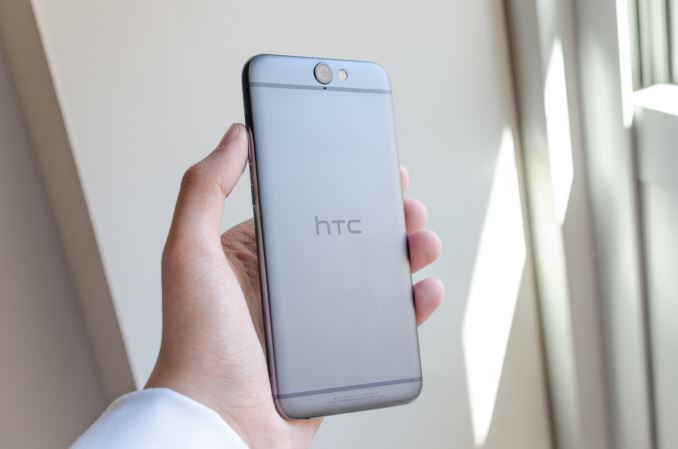

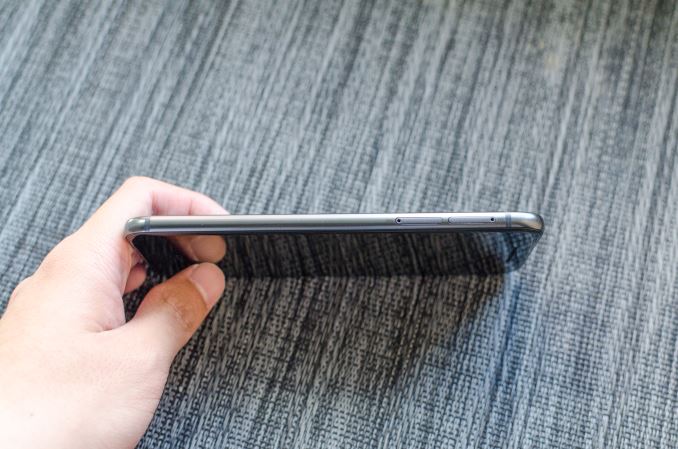

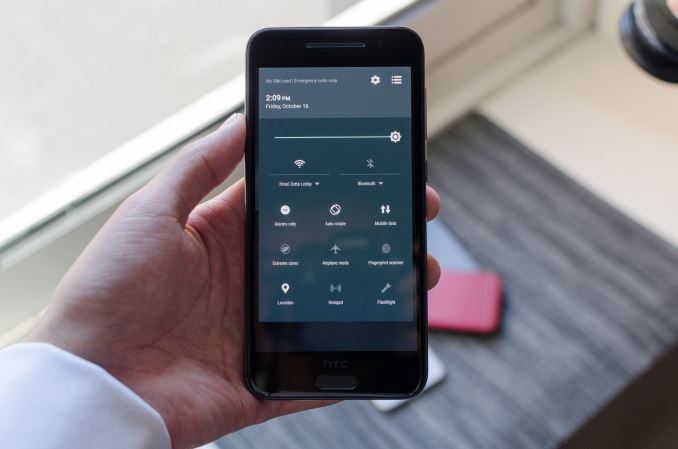
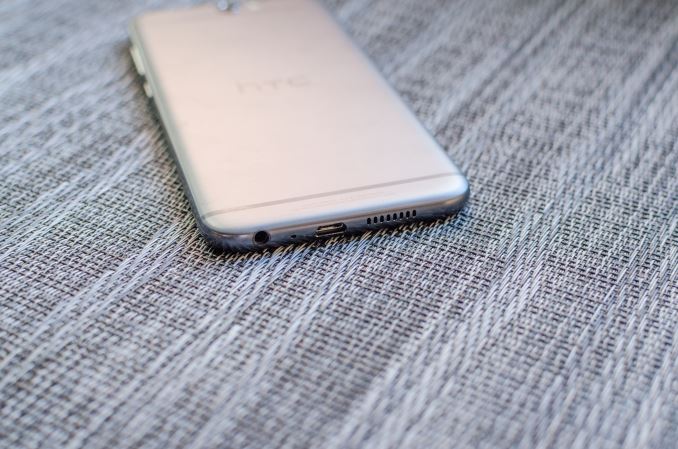

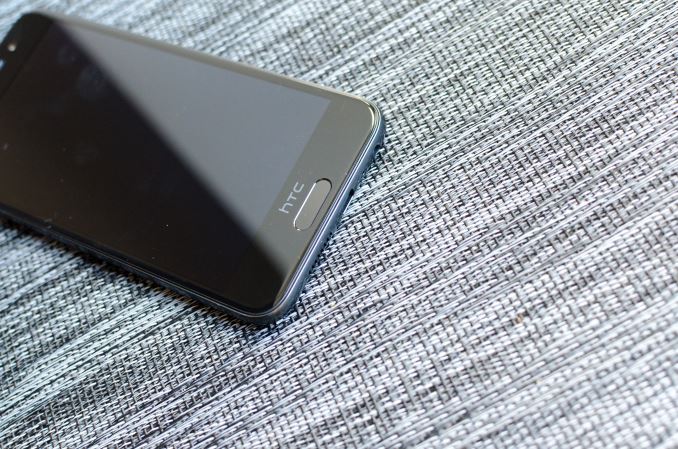
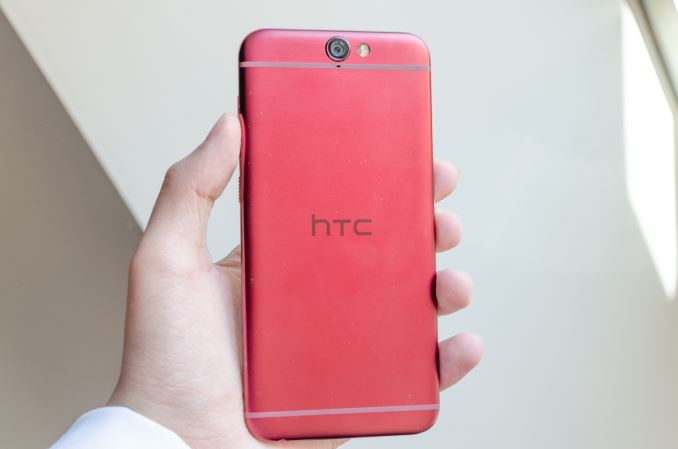

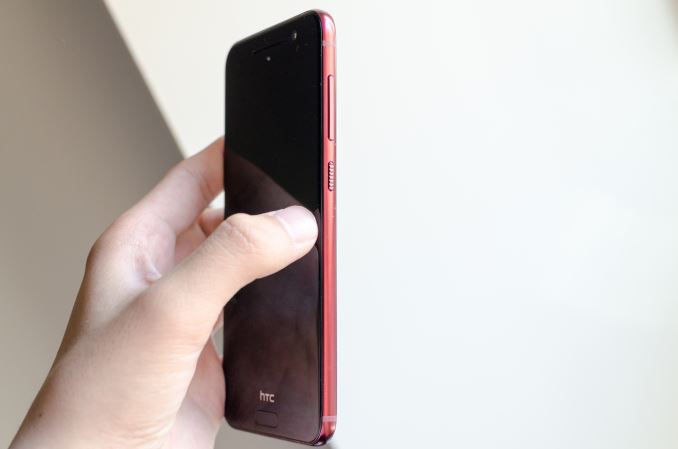

 Quote
Quote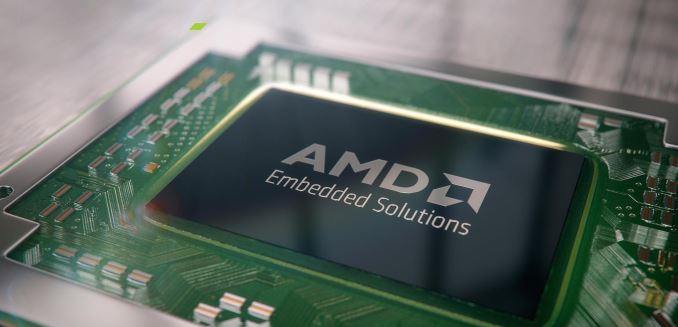
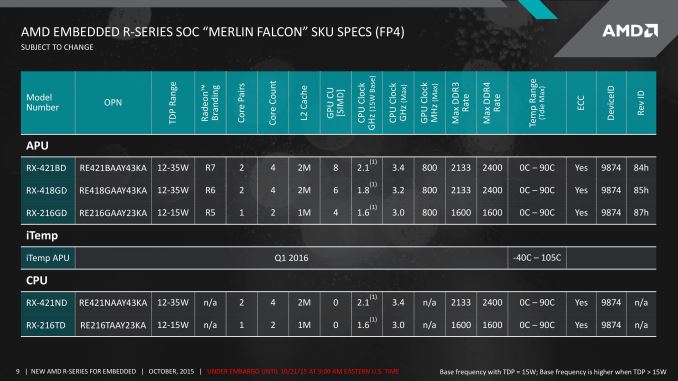
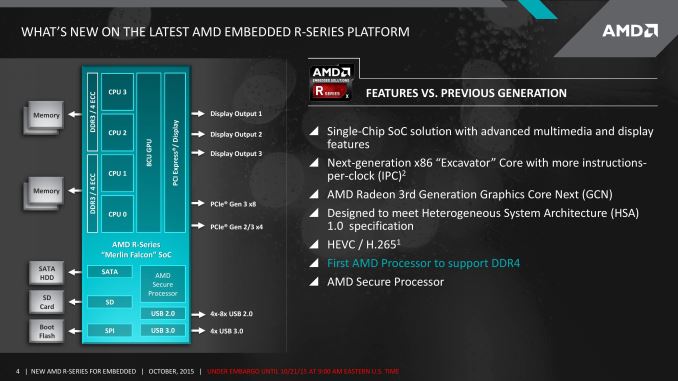
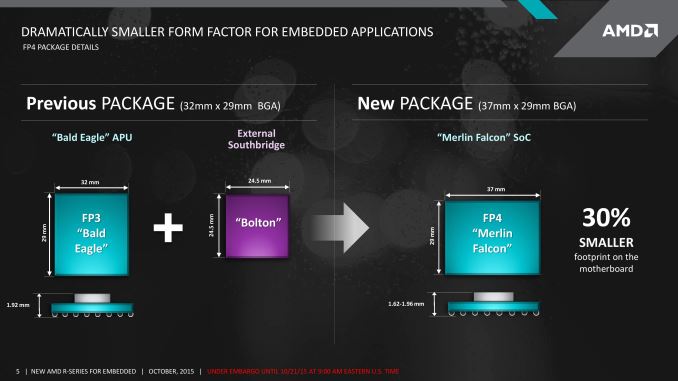
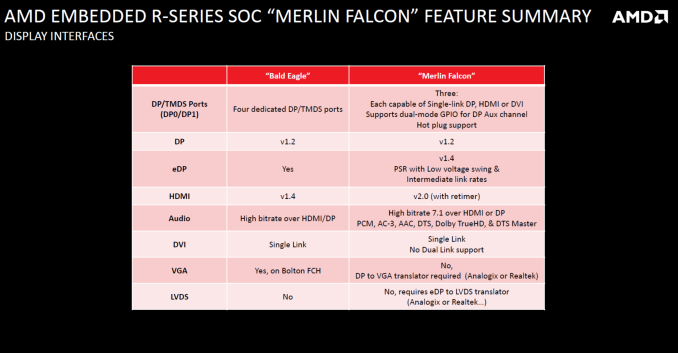
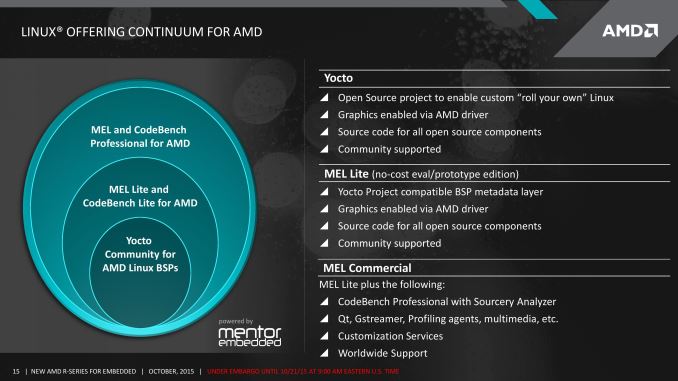
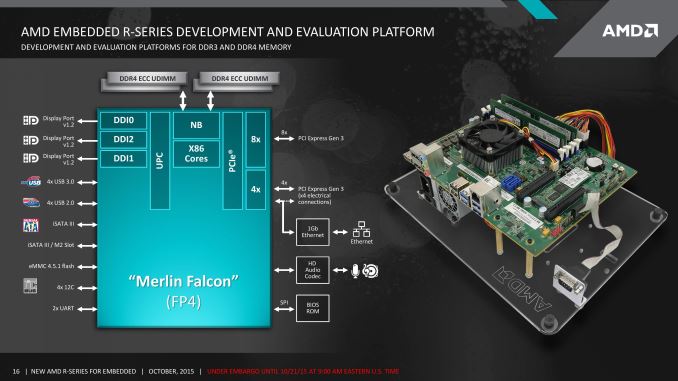
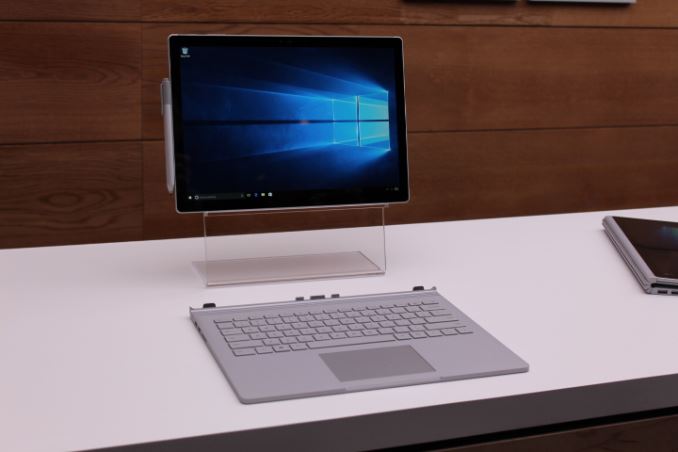
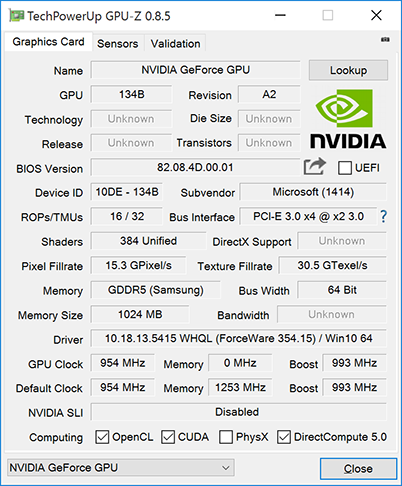
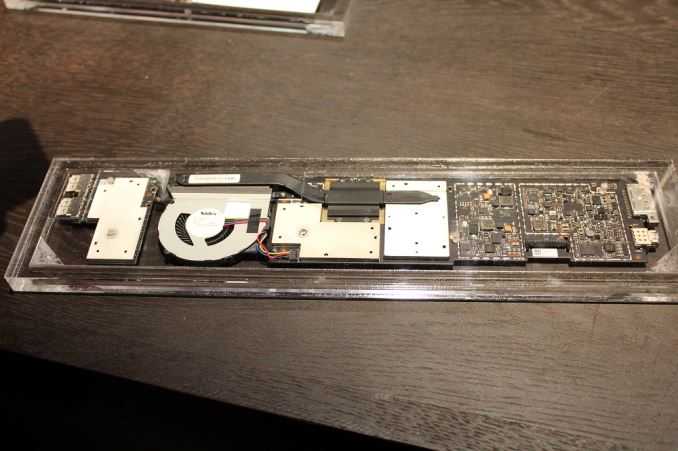
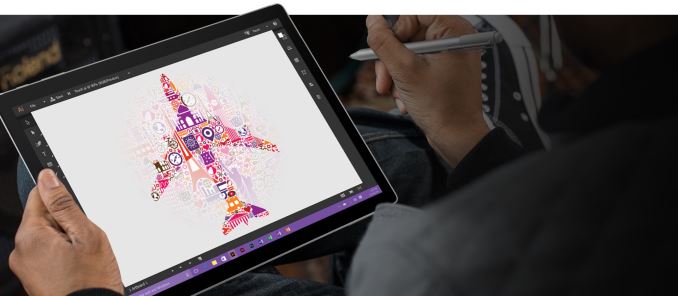
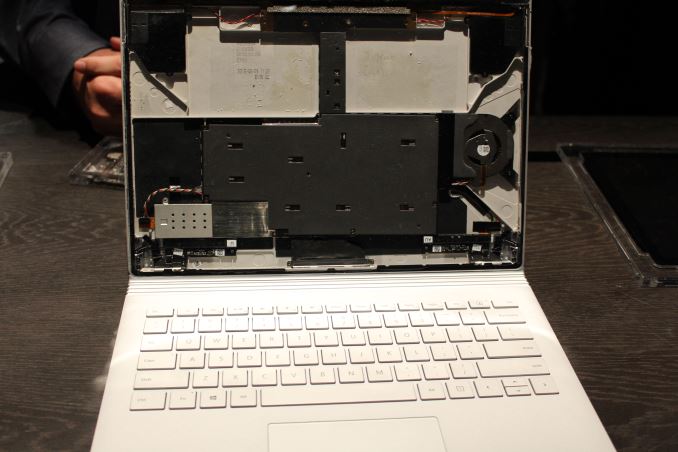
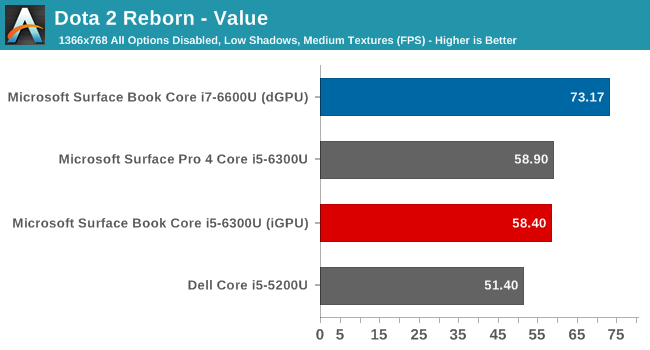
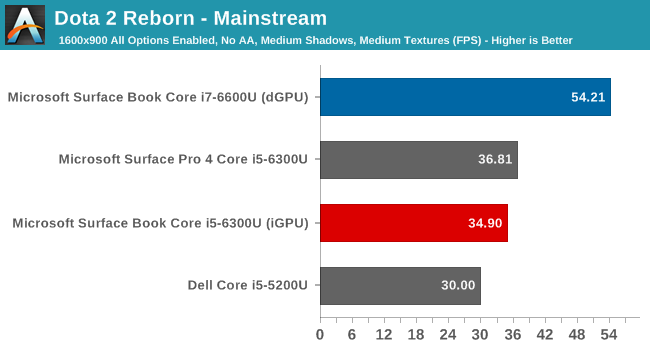
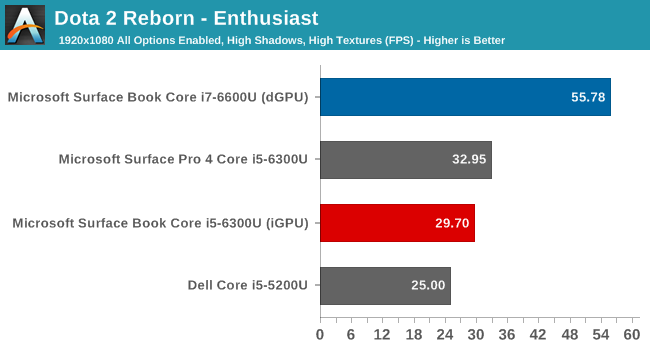
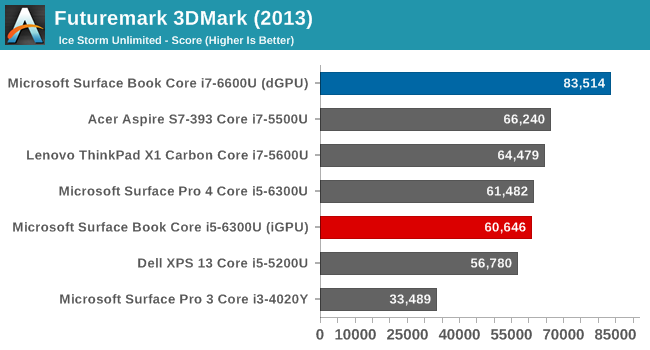

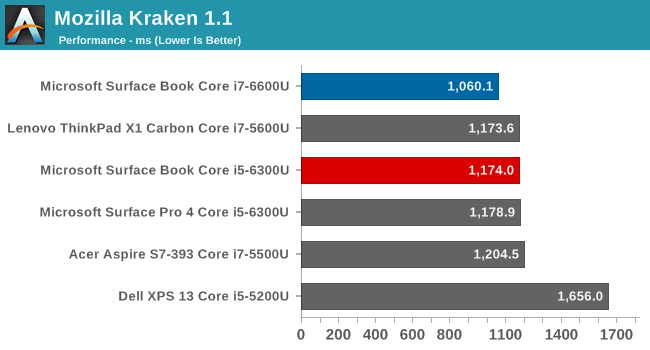
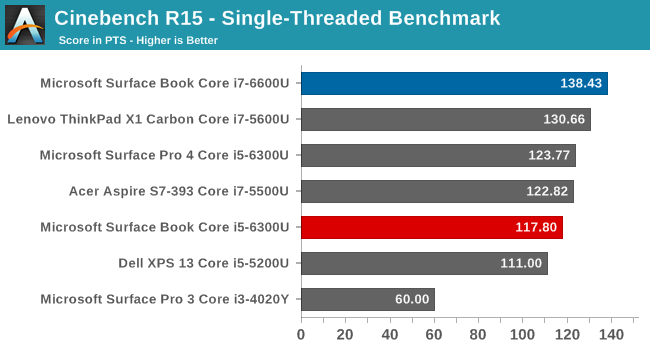
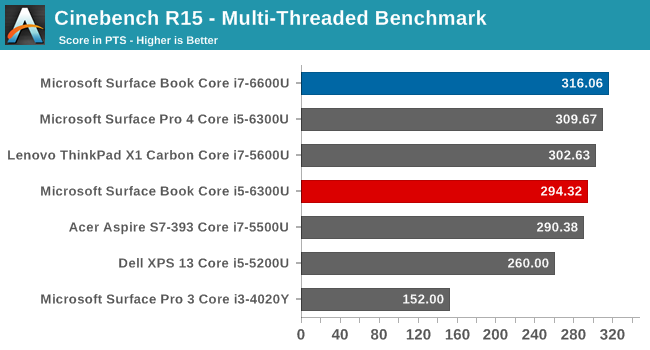
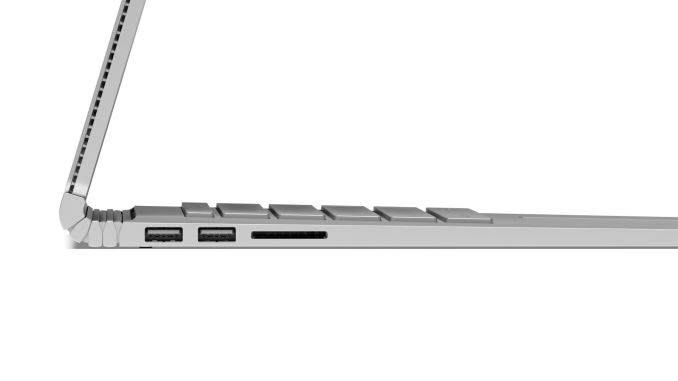
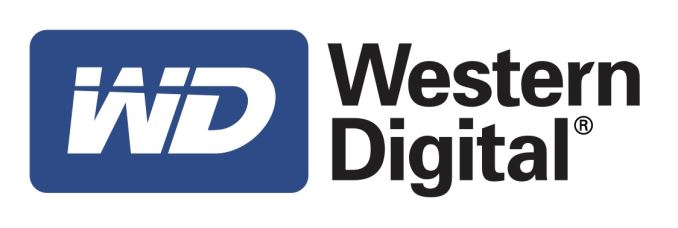
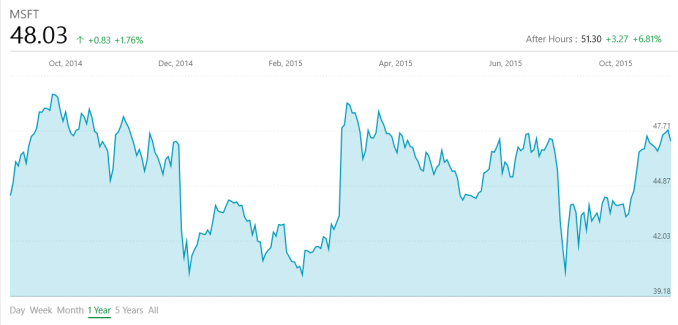


















Bookmarks